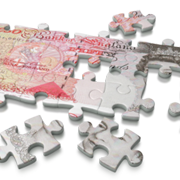17
Correcting Your Debt Problem
Posted by | Posted in Debt Management | Posted on 17-02-2011
Dealing with ones finances is never easy, especially when you have a debt problem. A debt problem is created when you end up spending more money than you spend on a consistent basis. It is certainly possible that one might be forced to operate on a negative cash flow for a short period of time, but if you are unable to turn it around by increasing your income andor cutting your expenses then having a debt problem is inevitable. Some simple steps can be followed that will help you get your finances back on track and out of the red.
1. Spend Less Than You Make
Financially savvy individuals do not spend everything they make. At the top of their financial priorities is savings. These people are wealthy for a reason. They didn’t spend every last dime they made. Don’t overlook this principle.
2. Make a Budget
The first step to eliminating your debt problem involves creating a budget. A budget is a lot like a diet – neither does you any good if they are not followed. When creating your budget you should map out your monthly cash flow. The cash flows will include both your expected sources and uses of money, also known as your income and expenses. If you do not have a good understanding of where your money is coming from and where it is going you will never be able get on top of your debt problem. Thus it is also important to implement a budget as a tracking mechanism. You should record and track your expenses each month.
Towards the end of each month you should analyze your financial situation. Did you spend more then you made? Where were your biggest expenses? Can these expenses be curbed? As you are analyzing your budget, you have to look for the fat that can be cut away. For instance, if you find you spent a lot of money eating out then you can easily curtail that habit and eat in more. That will save you money and help your bottom line. Your budget should be repeatedly reviewed and fine tuned in this manner each month. Slowly but surely you will notice your monthly expenses decreasing below your monthly income level, creating some extra income.
3. Form a Debt Repayment Schedule
e you have created extra income, you can begin to address your debt problem. Typically you will want to apply your excess money to the highest cost debt first. Say you have debt on 3 credit cards with rates of 20%, 18%, and 12%. To begin with you will want to pay the minimum monthly amount on each card, and apply all the extra income you have each month to the highest rate card (20%). Once you have paid this card off, you will then take the monthly minimum amount you were paying on the 20% interest rate credit card plus the monthly surplus of money and apply it to the next highest interest rate card (18%). Continue on till this card is paid off, and then do the same with the last card.
Make Saving a Habit
When you have paid of your debt problem the next step is to begin saving your extra income. At this point it would be wise to begin taking the amount of money you were applying to your credit card payment and put it into savings. You can continue to live the lifestyle you have grown accustomed to as you create a nice little nest egg for yourself. The key to saving your extra income is being disciplined, and making saving both a priority and a habit.
As you probably know financial stability is priceless. If you want to avoid a debt problem then you must remain in control of your spending habits, ensure that you are saving money each month, and continue to work hard. Overcoming a debt problem isn’t always easy, but it can be done with hard work and discipline.



